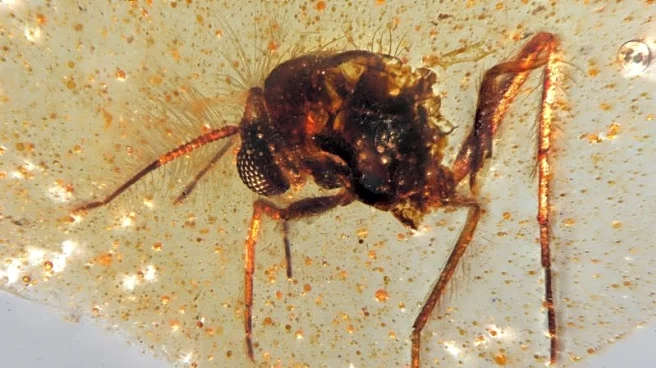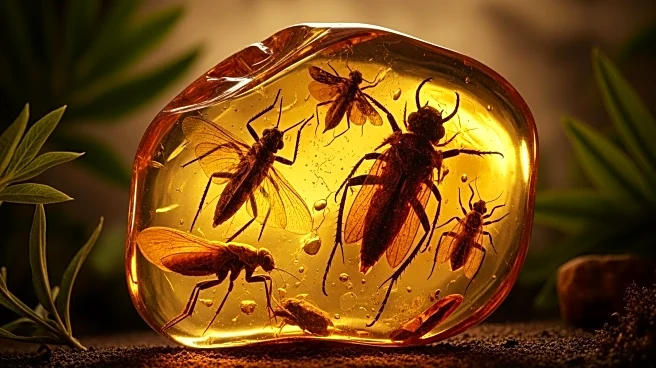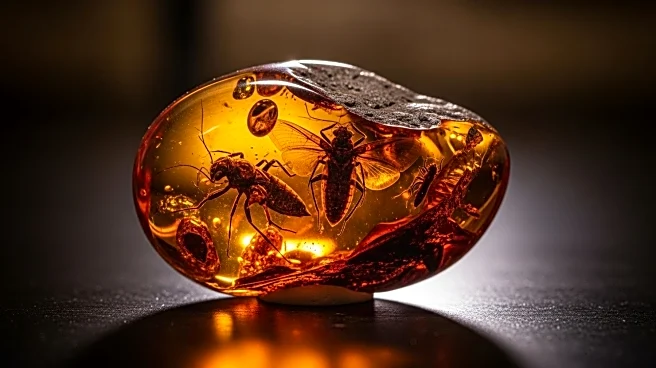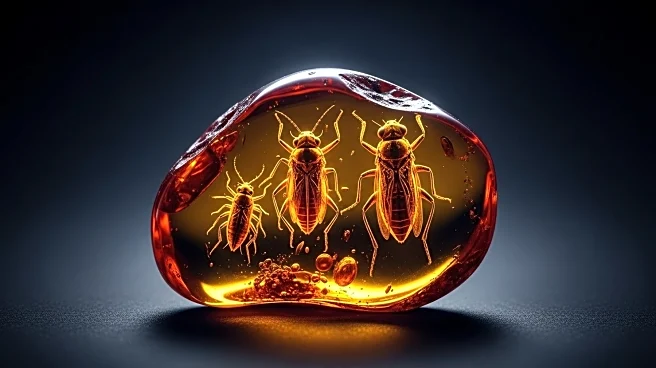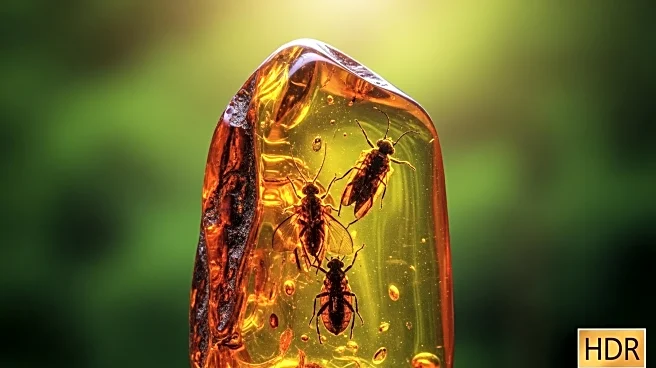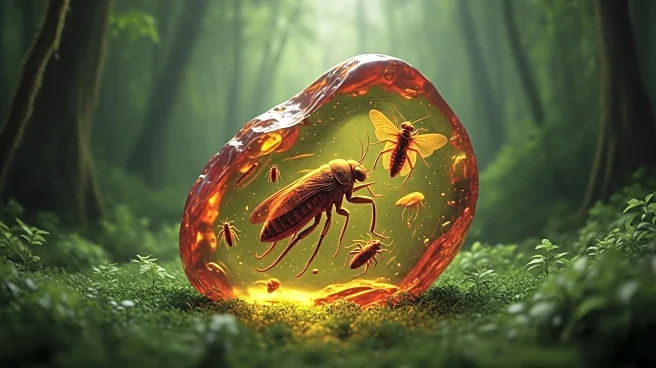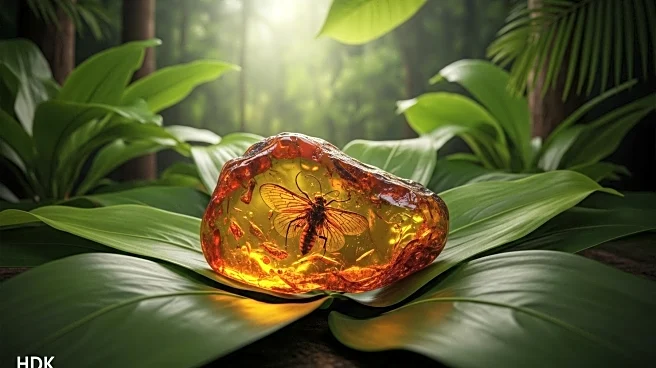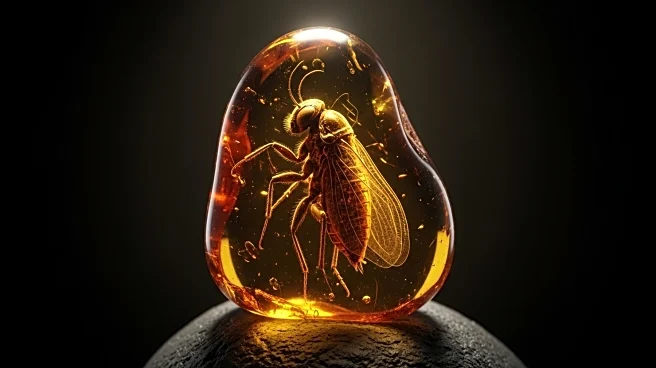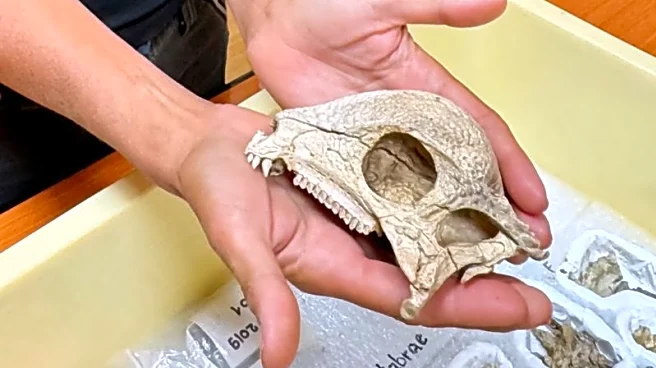What's Happening?
A quarry in the Amazon rainforest of Ecuador has revealed amber deposits containing perfectly preserved insects from 112 million years ago. Researchers, led by Xavier Delclòs from the University of Barcelona, discovered these bio-inclusions, which include mosquitoes, beetles, flies, wasps, and midges, alongside a spider's web. The amber is believed to originate from conifer resin when Ecuador was part of the Gondwana supercontinent. This discovery marks the first instance of Mesozoic amber with insect inclusions found in South America, providing insights into the ecosystem during the Cretaceous Period.
Why It's Important?
The discovery of these amber deposits is significant for paleontology and evolutionary biology, offering a rare glimpse into the biodiversity and ecological conditions of the Cretaceous Period. The preserved insects can provide valuable information on the interactions between species and their environments, potentially shedding light on the evolutionary processes that shaped modern ecosystems. This finding also highlights the importance of South America in understanding global prehistoric life, expanding the geographical scope of paleontological research.

